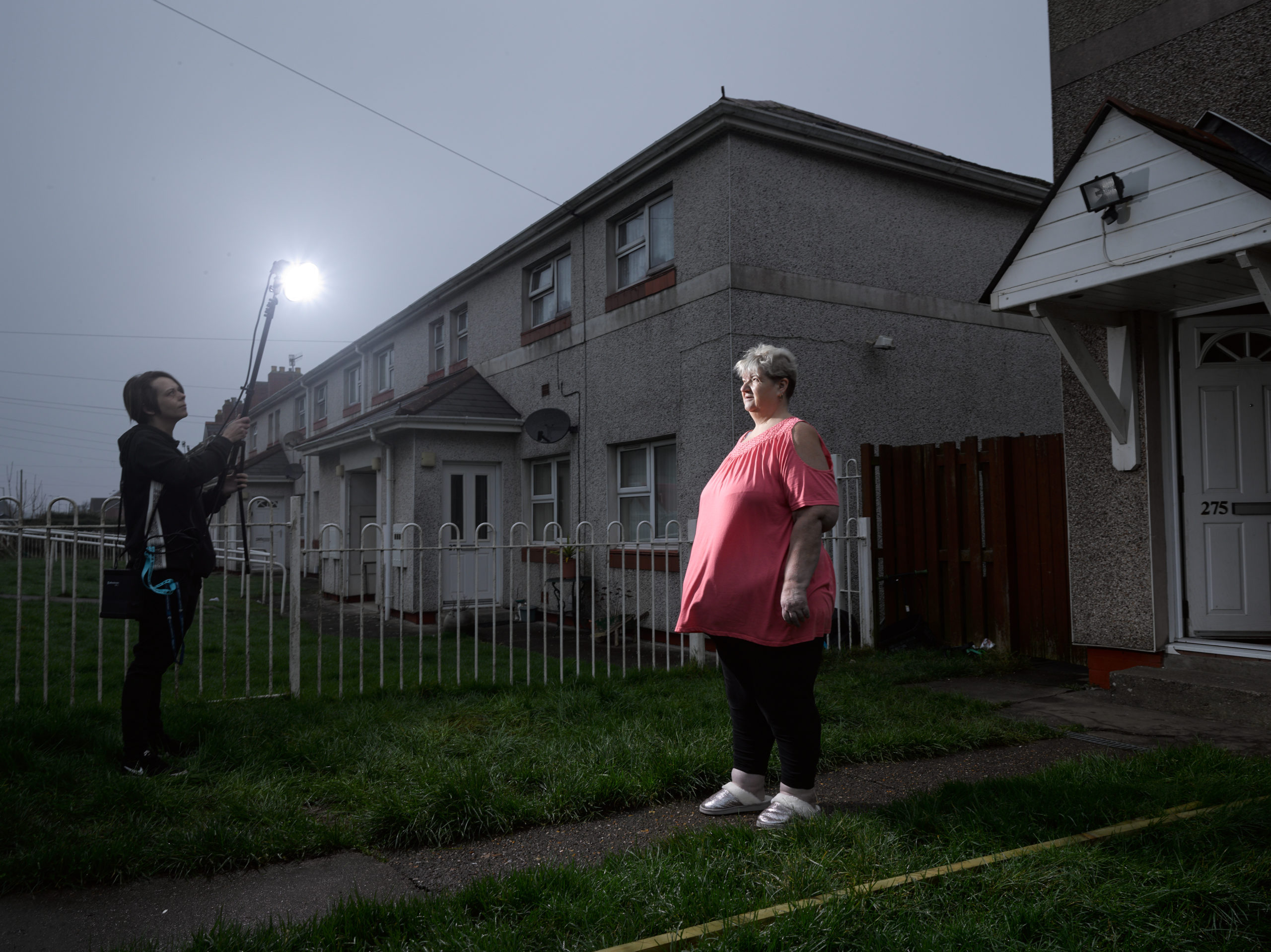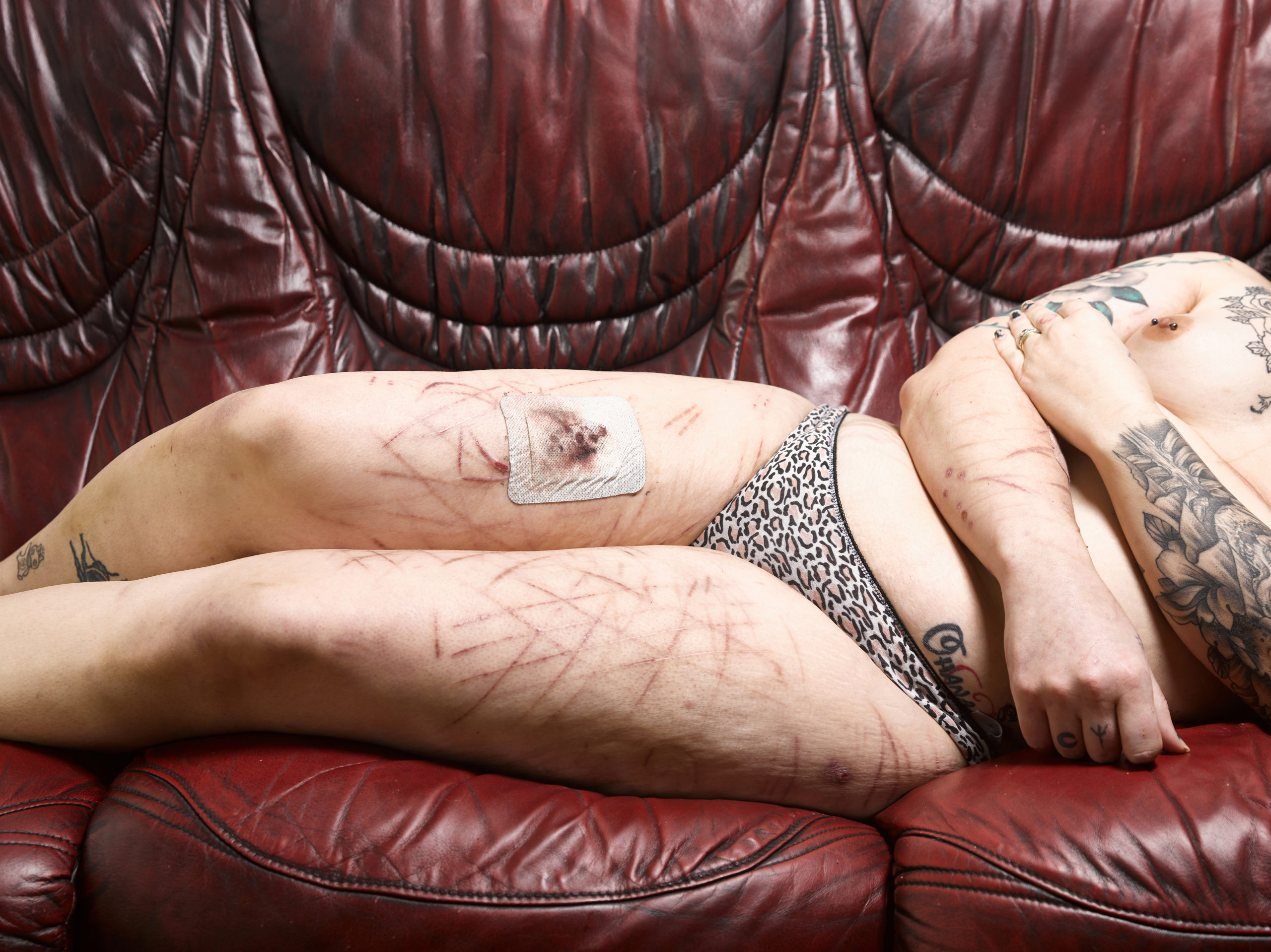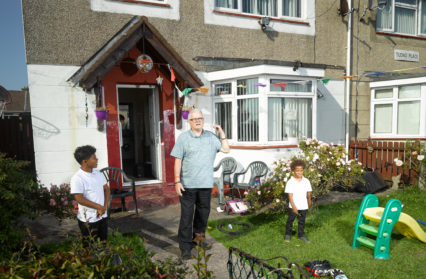Swansea has been transformed into a mythical kingdom for Richard Ansett’s ‘No Place Like Home’, a show being hosted by Elysium Gallery as part of the Swansea Fringe Festival.
Renowned artist Richard Ansett, who has previously worked with film directors David Lynch and David Cronenberg, has created a new body of work between lockdowns that brings his complex photographic practice to Swansea in a self-initiated residency supported by UWTSD Swansea College of Art.
The project, No Place Like Home, is being hosted by Elysium Gallery and forms part of the 2021 Swansea Fringe Festival. ‘We are so happy to be representing Ansett’s latest works at Elysium. I feel that certain areas and its peoples in Swansea are often misrepresented and Ansett’s photography lends an authentic viewpoint and voice,’ said Jonathan Powell, Elysium director.
The ‘in-camera’ works of No Place Like Home follow the tradition of photographic portraiture but explore hard hitting subjects of hunting, nudity, self-injury and mental health issues, as Ansett imagines ‘a mythical kingdom existing in a parallel universe to the city’, pulling back the wizard’s curtain in this testimony to the artist gaze.
Overall winner of Photographic Art at the 7th Arte Laguna Prize and 1st Prize winner of the Sony World Photography Awards, Ansett is recognised for a relentless passion for the medium as a vital and present art form for the examination of self and society.
Proud Swansea resident and BA student Kaylee Francis was assigned by UWTSD as mentee and assistant to Ansett for the duration of the project. Francis was already familiar with Ansett’s work, having included a critique of his practice in her dissertation on the ethics in photographic practice as cynical objectivism and ‘poverty porn’.
Francis introduced Ansett to her beloved Townhill as an experiment to observe his response to her community ‘close up’, but, as with all great mentor/mentee relationships, Francis has become what Ansett considers his ‘Virgil, guide and muse without whom this project would have been impossible’.
Francis is included in one of the key images, holding a light on her stepmother Denise standing outside her home in her silver slippers (which inspired the title of the exhibition). ‘This image is a reminder that what we are looking at is not a simple truth and invites scrutiny of photography as an accurate or truthful representation of reality,’ Ansett says.

The collection also features Sierra, whose struggle to rationalise her complex mental health issues is displayed in an uncompromising series of images of the scarring left behind from self-harm, in an intimate collaboration with her to tell her own story.
‘For Sierra this image is a representation of the complicated relationship she has to self-harm as a relief from her extreme consequences of managing her mental health issues,’ explained Ansett. ‘The dramatic and shocking nature of injury can be a distraction from the reality of the torment we are trying to convey and these images, whilst difficult, attempt to negotiate the need to share this reality without alienating the viewer. The tragic irony of self-harm itself is that for many it is a distraction from the extreme emotional and mental distress that can lead to overwhelming feelings of suicide’.
Ansett, who has some training in Person Centred and Gestalt therapies as well as being an experienced Samaritan volunteer, believes the presence of the camera offers therapeutic value for a subject, allowing them to feel seen and understood without judgement. ‘Sierra’s scars are not just an indication of her damage but offer hope as a sign of her physical and mental healing in parallel. Our scars are literally and metaphorically inevitable signs of our engagement with reality’.

Ansett expressed that even though this exhibition accidentally touches on evidence of difficulties experienced by the community, it is not something that is indicative of Swansea and should not be considered unique to Swansea: ‘I don’t want people to assume this is a representation of Swansea; it’s not. It goes beyond that. These are common themes of humanity that exist everywhere if we dare to look. It’s a glimpse at a parallel universe to our lives and I invite empathy rather than judgement’.
No Place Like Home is showing at Elysium Gallery 1 in Swansea until Saturday the 20th of November. The gallery is open Wednesday–Saturday, 11:00–18:00.
To find out more about ‘No Place Like Home’ by Richard Ansett, visit the Elysium Gallery website.












